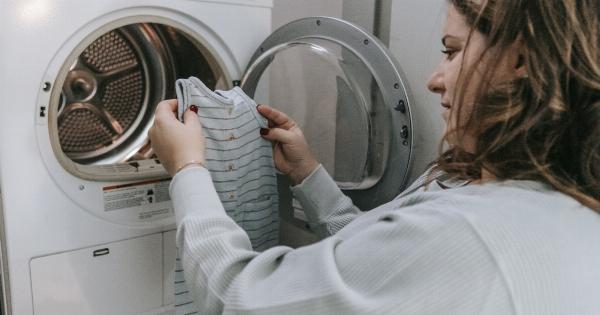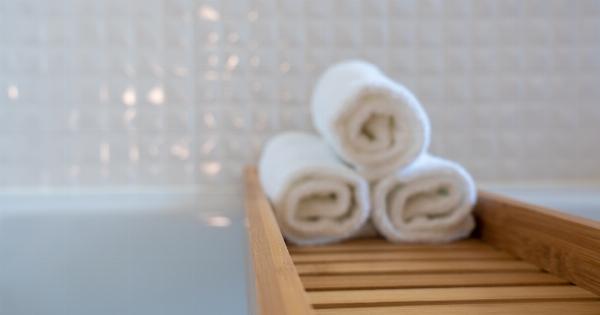Pajamas, our cozy and comforting sleepwear, deserve proper cleaning to keep them fresh and hygienic. As we spend hours sleeping in them, it’s important to establish a regular cleaning routine for our beloved pajamas.
Whether it’s silk, cotton, or flannel, proper care will ensure these nighttime companions remain clean and fresh. Let’s dive into some essential tips for cleaning pajamas:.
Sorting and Laundering Pajamas
Sorting your pajamas is the first step towards effective cleaning. Separating them based on color, fabric, and level of dirtiness will prevent any potential damage and ensure a thorough wash. Keep the following in mind:.
Washing Instructions
Before tossing your pajamas into the washer, check the manufacturer’s label for any specific washing instructions. Some pajamas may require a gentle machine wash, while others may need to be hand washed.
Additionally, be aware of any temperature restrictions or special detergents recommended by the manufacturer.
Stain Removal
Pajamas are prone to stains from accidental spills or sweat. Treating these stains promptly is essential for maintaining their freshness. Before washing, pre-treat any visible stains using appropriate stain removers.
Always avoid using bleach or harsh chemicals that may damage the fabric.
Fabric Softeners and Fragrance
To infuse a delightful fragrance and added softness into your pajamas, consider using fabric softeners. However, be mindful of any allergies or sensitivities to fragrances.
For those sensitive to scents, unscented fabric softeners could be a better option.
Drying Pajamas
Proper drying methods help maintain the integrity and shape of your pajamas. Avoid excessive heat, such as high-temperature tumble drying, as it may shrink or damage the fabric. Instead, opt for low heat or air-drying methods.
Hang your pajamas in a well-ventilated area or use a drying rack to preserve their quality.
Ironing and Folding
Pajamas often require minimal ironing. If necessary, use a cool iron setting to remove any wrinkles. However, it’s best to avoid ironing fabrics that are sensitive to heat, like silk.
After ironing, fold your pajamas neatly and store them in a clean, dry area.
Treating Specific Fabric Types
Each fabric type demands special care to keep it fresh and durable:.
Cotton Pajamas
Cotton pajamas are popular due to their breathability and softness. Wash them in warm water with a mild detergent to remove dirt and impurities. Pre-soaking stained areas and using color-safe bleach can restore the fabric’s cleanliness.
Avoid using excessive heat when drying to prevent shrinkage.
Silk Pajamas
Luxurious silk pajamas require delicate handling to preserve their luster and smoothness. Hand-washing with a gentle detergent is often the best choice. Avoid rubbing the fabric vigorously and opt for lukewarm water.
After washing, roll the silk pajamas in a towel to absorb excess moisture before air-drying them away from direct sunlight.
Flannel Pajamas
Flannel pajamas provide warmth and coziness during colder months. To maintain their softness, wash them in cold water using a gentle cycle. Avoid using fabric softeners as they can diminish the flannel’s absorbent properties.
Be sure to dry flannel pajamas thoroughly to prevent odor and potential mold growth.
Routine Cleaning of Towels
Towels, frequently used for drying our bodies, demand regular cleaning to eliminate bacteria, maintain absorbency, and prevent unpleasant odors. Let’s explore some effective ways to keep your towels fresh and fluffy:.
Washing Towels
Similar to pajamas, sorting towels based on color, fabric, and level of dirtiness is the first step. Consider washing heavily soiled towels separately to avoid cross-contamination and ensure a thorough clean.
Towels can be washed in warm water with a gentle detergent, preferably one without brighteners or bleach.
Dos and Don’ts for Towel Maintenance
To ensure towels remain fresh and absorbent, keep the following tips in mind:.
Avoid Fabric Softeners
Contrary to popular belief, fabric softeners can reduce a towel’s absorbency. They leave behind a residue that inhibits the towel’s ability to soak up water.
Instead, consider using white vinegar during the rinse cycle as a natural fabric softener alternative.
Sanitizing Towels
To eliminate any bacteria or germs, sanitize your towels once a month. Add one cup of white vinegar or half a cup of baking soda to the wash cycle along with your regular detergent.
This extra step helps keep your towels fresh, hygienic, and free of any lingering odors.
Drying Towels
Properly drying towels is crucial to prevent mildew, mold, and unpleasant odors. After washing, consider air-drying your towels outdoors in the sunlight, as it naturally disinfects and brightens fabrics.
If using a dryer, ensure it’s set to a moderate temperature for towel longevity.
Storage and Freshness
To maintain freshness between uses, ensure towels are completely dry before folding and storing them. Storing them in a clean, well-ventilated area will prevent any potential musty smells or mildew growth.
Routine Cleaning of Sheets
Our bedsheets provide a comfortable sanctuary for rest and recovery, making their regular cleaning essential. Clean and fresh sheets enhance our sleep quality, contribute to personal hygiene, and promote overall well-being.
Consider the following tips for a routine cleaning of your sheets:.
Frequency of Washing
Experts recommend washing your sheets every one to two weeks, or more frequently if necessary. Factors such as sweat, allergens, or skin conditions may require more frequent cleaning. Establish a washing routine to maintain clean and hygienic sheets.
Preparation Before Washing
Prior to washing your sheets, remove any pillowcases, duvet covers, or bed skirts. Separate your sheets based on color and fabric type to avoid bleeding and potential fabric damage.
Optimal Water Temperature
Check the care label on your sheets to determine the recommended water temperature for washing. Hot water is effective for removing bacteria and allergens, but it may cause shrinkage or fading in certain fabrics.
When in doubt, choose a warm water setting.
Detergent Selection
Using a gentle, hypoallergenic detergent ensures the cleanliness and longevity of your sheets. Avoid detergents with brighteners or strong fragrances, as they may irritate the skin and diminish the fabric’s quality.
Treating Stains
Act promptly when dealing with stains on your sheets. Pre-treating stained areas with a stain remover or a homemade solution helps prevent stubborn stains from setting in.
Always follow the instructions on the stain removal product and test it on a small, inconspicuous area first.
Machine Drying and Ironing
Machine drying your sheets on a low or medium heat setting is generally safe. However, excessive heat can cause shrinkage and damage the fabric. If possible, remove your sheets from the dryer while they are still slightly damp to minimize wrinkles.
Ironing can be done with a low heat setting, ensuring you do not overheat the fabric.
Storage and Protection
When not in use, store your clean sheets in a cool, dry place to avoid any moisture build-up. If storing for an extended period, consider using storage bags or containers specially designed to protect fabrics from dust, pests, and potential damage.




























